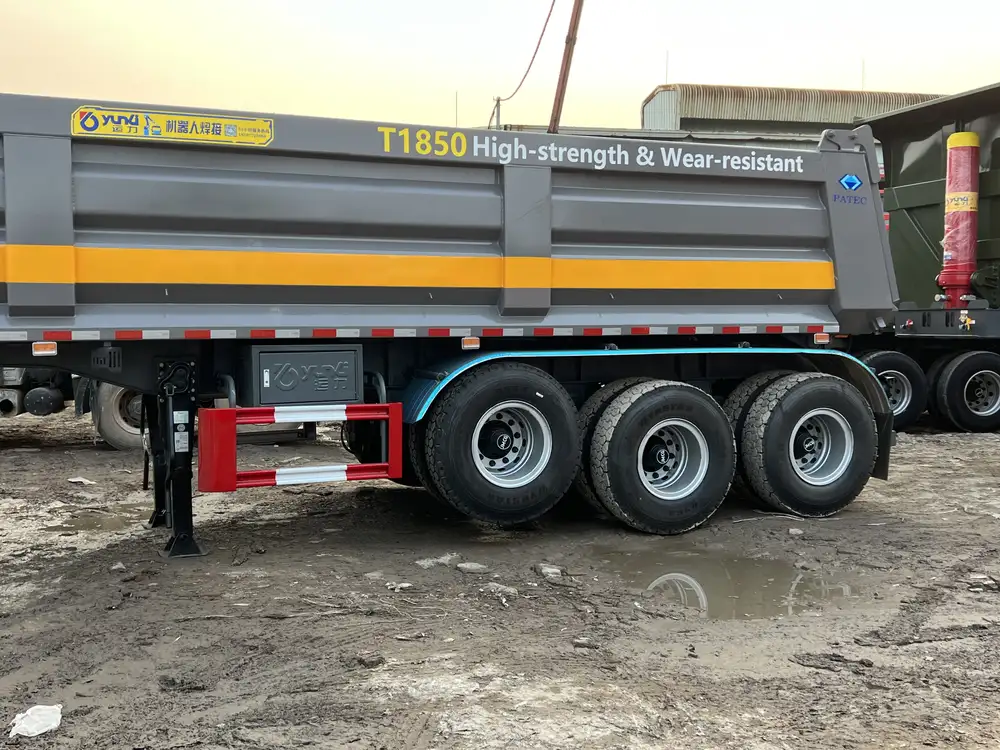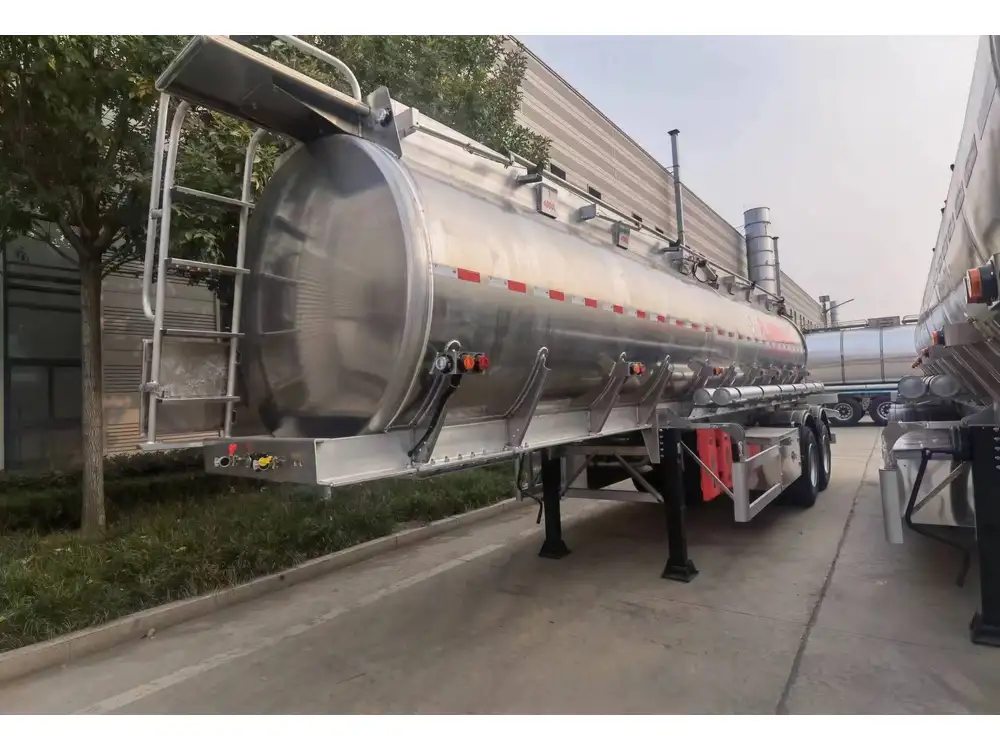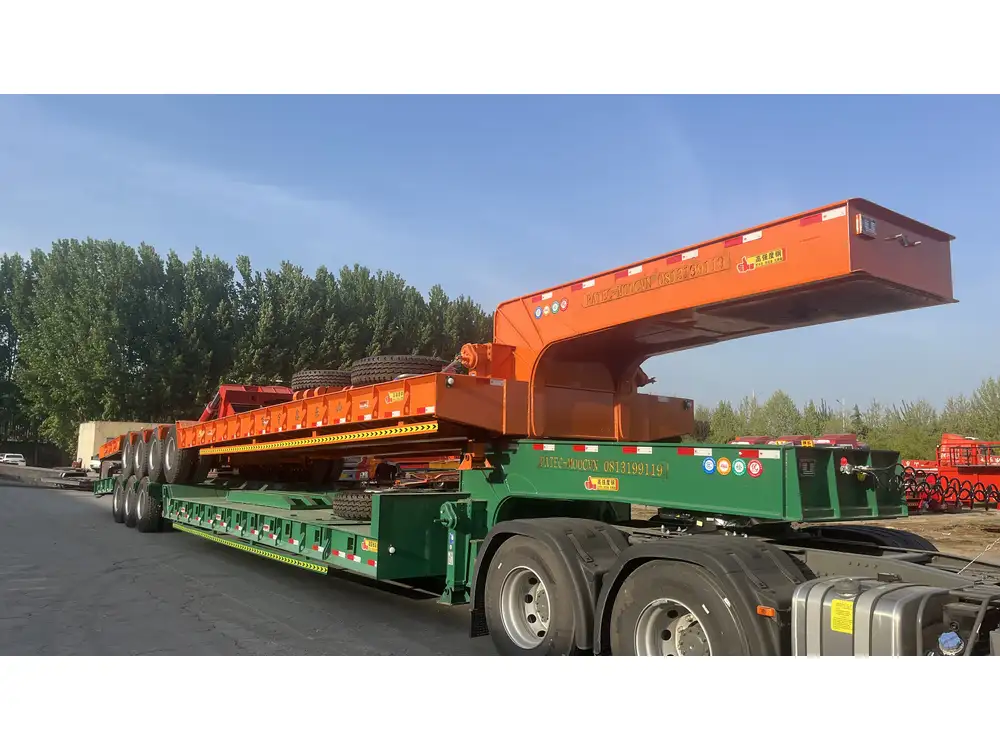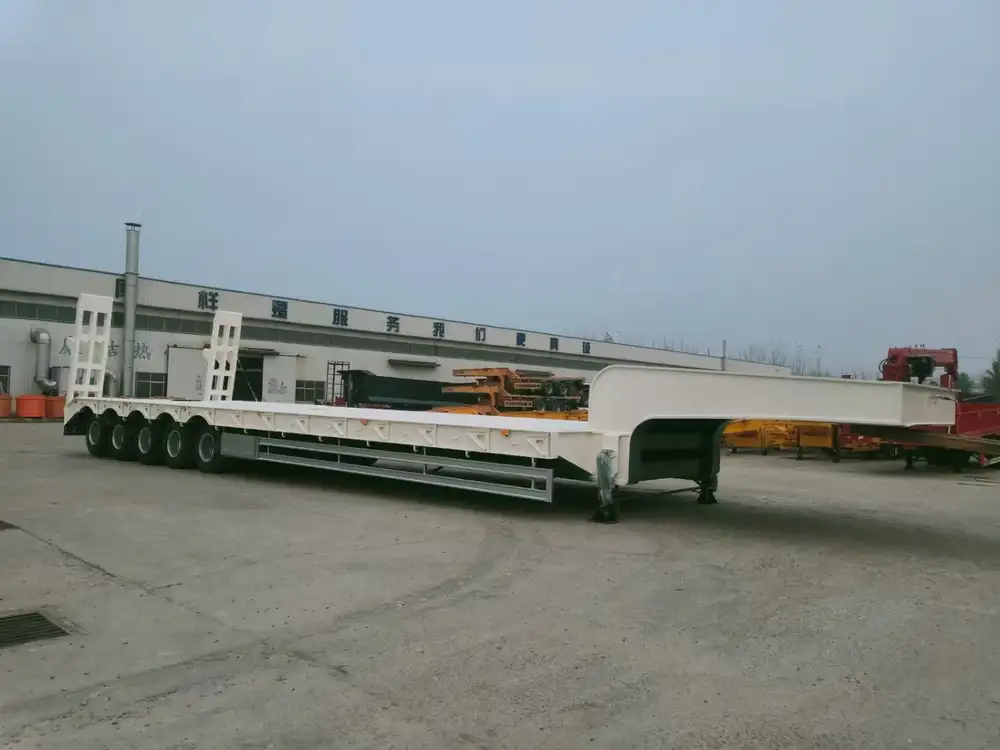Introduction to Semi-Trailers
Semi-trailers are an essential component of the freight and transportation industry. These versatile vehicles, coupled with trucks, facilitate the movement of goods across various distances, from local deliveries to international transport. However, understanding the specific dimensions of a semi-trailer, particularly its width from tire to tire, is critical for operators, logistics managers, and businesses relying on transportation services. This article delves deeply into the various aspects of semi-trailer widths, measurement standards, and practical implications.
What is the Typical Width of a Semi-Trailer?

Standard Dimensions
Legal and Regulatory Standards:
- The standard width of a semi-trailer in the United States typically measures 8.5 feet (102 inches). This figure adheres to federal regulations and is crucial for road safety and compliance.
- In many countries outside the U.S., semi-trailer widths can vary, with European standards often allowing for slightly wider configurations, primarily to accommodate specialized cargo.
Variations by Design:
- Flatbed Trailers: Here, the width can align with standard regulations, but specific designs may offer slightly broader or narrower tracks depending on the model and purpose.
- Reefer Trailers: These refrigerated trailers may also maintain an 8.5-feet width; however, specialized modifications could exist for insulation and cooling equipment placement, affecting overall dimensions.
- Tank Trailers: These trailers often have a specialized width to support their unique functionality, which may vary based on the liquid or gas being transported.
Measuring Width: From Tire to Tire
To understand the distance from tire to tire, it’s essential to consider several factors:
- Tire Size: Tire size impacts total width measurements. Larger tires naturally extend the overall width.
- Tire Configuration: Dual tire configurations, common in semi-trailers, offer more stability and load capacity but expand the width comparably to single tires.
- Manufacturer Specifications: Each manufacturer may have different widths based on the semi-trailer type, design alterations, and intended use. Always refer to the manufacturer’s specifications for accurate measurements.
| Component | Typical Width (inches) | Impact on Overall Width |
|---|---|---|
| Standard Tire Width | 11 – 14 | Varies overall semi-trailer width |
| Dual vs. Single Tires | 17 – 18 (Dual) | Increases width; enhances stability |
| Trailer Type | 102 | Compliant with federal regulations |
Practical Considerations for Width Measurements

Importance of Accurate Measurements
Understanding the precise width from tire to tire is essential for several reasons:
- Compliance with Road Regulations: Non-compliance can lead to fines, delays, or even restrictions on certain routes.
- Enhanced Maneuverability: Knowing the specifications aids in navigating tight spaces, construction sites, or urban environments.
- Safety: The proper awareness of dimensions can minimize accidents related to width clearance at overpasses, bridges, and roadside structures.
Measuring Techniques
For accurate measurements, consider these approaches:
- Utilize a Measuring Tape: Measure from the outer edges of each tire to obtain a clear width.
- Consult Manufacturer Documentation: Refer to official specifications which include standardized measurements.
- Employ Digital Measuring Tools: Laser measuring tools provide precision without the manual recalibration risks.
Common Misconceptions
- Tire Width Equals Trailer Width: It’s a misconception that a tire’s width corresponds directly to the overall trailer width. Manufacturers design semi-trailers with accommodations beyond just the tires.
- Variability in Designs Equals Variability in Use: While size affects function, many semi-trailer types share a standard width but are designed for different loads.
| Misconceptions | Clarifications |
|---|---|
| Tire width = Overall width | Design includes structural allowances |
| All semi-trailers have the same dimensions | Variations exist based on use/cargo types |

Customization of Semi-Trailer Widths
The Role of Customization in Semi-Trailer Design
Manufacturers may offer customizable dimensions to meet specific cargo requirements. There are several reasons for seeking customized widths, including:
- Specialized Loads: Non-standard or oversized loads often necessitate wider trailers.
- Regional Regulations: Different jurisdictions may impose their width regulations.
- Aerodynamics: For fuel efficiency, some may opt for a narrower design to reduce drag.
Custom Width Options:
| Trailers | Common Custom Widths (inches) | Typical Use |
|---|---|---|
| Flatbed Trailers | 96 to 120 | Heavy machinery transport |
| Lowboy Trailers | 102 to 120 | Oversized construction equipment |
| Car Haulers | 102 to 110 | Vehicles transport |

Consultation with Professionals
Consulting with a semi-trailer manufacturer or a logistics expert allows businesses to understand their needs better, ensuring that the selected width aligns with operational goals and regulatory compliance.
The Economics of Width: Understanding Costs
Cost Implications of Wide vs. Narrow Trailers
When comparing widths, financial considerations emerge, significantly affecting logistics operations:
Fuel Efficiency:
- Wider trailers may incur increased fuel costs due to aerodynamic drag.
- Narrower trailers can optimize fuel consumption but may compromise load capacity.
Load Capacity:
- Wider trailers allow for larger payloads but increase potential tariffs or fees in certain regions.
- Assessing the balance between width and load capacity contributes to overall operating efficiency.

Long-Term Financial Planning
Investing in appropriate dimensions prolongs trailer life, reducing maintenance costs associated with improper width leading to quicker wear or tear during operations.
Wider Understanding: Tire-to-Tire Width Impact on Transportation
Links Between Width and Performance
The distance from tire to tire influences various performance metrics of semi-trailers, including:
- Stability: Wider configurations generally provide greater stability, reducing the risk of tipping during cornering.
- Load Distribution: The width allows for effective weight distribution, critical for maintaining low center-of-gravity and road balance.
- Driver Confidence: Awareness of trailer dimensions aids drivers in making informed decisions when maneuvering.

Safety Implications
The relationship between tire-to-tire width and safety cannot be overstated. Proper width adherence ensures compliance, reduces the likelihood of accidents, and maintains a high safety standard for operators, logistics managers, and end consumers.
Conclusion: The Importance of Tire-to-Tire Width in Semi-Trailer Design
In summary, understanding the width from tire to tire of semi-trailers is a crucial aspect of effective transportation management. It encompasses various industry standards, operational implications, customization options, and economic considerations. Whether your focus is on regulatory compliance, cost efficiency, or operational safety, knowledge of these dimensions equips operators and logistics managers to make informed decisions.
Positioning this information strategically for future reference and ongoing training within organizations can foster better operational efficiencies and promote safety in an ever-evolving transport landscape.
Key Takeaways
- The typical semi-trailer width is standardized at 8.5 feet (102 inches).
- Variations exist depending on trailer type, purpose, and manufacturer specifications.
- Accurate measurements are essential for compliance, safety, and operational efficiency.
- Customization options provide flexibility to meet specific cargo needs and regional regulations.
- Understanding the economics surrounding trailer width further enhances decision-making.
By keeping these factors in mind, stakeholders can ensure that they select the most suitable semi-trailer designs, optimize their logistics operations, and ultimately enhance their service offerings.



